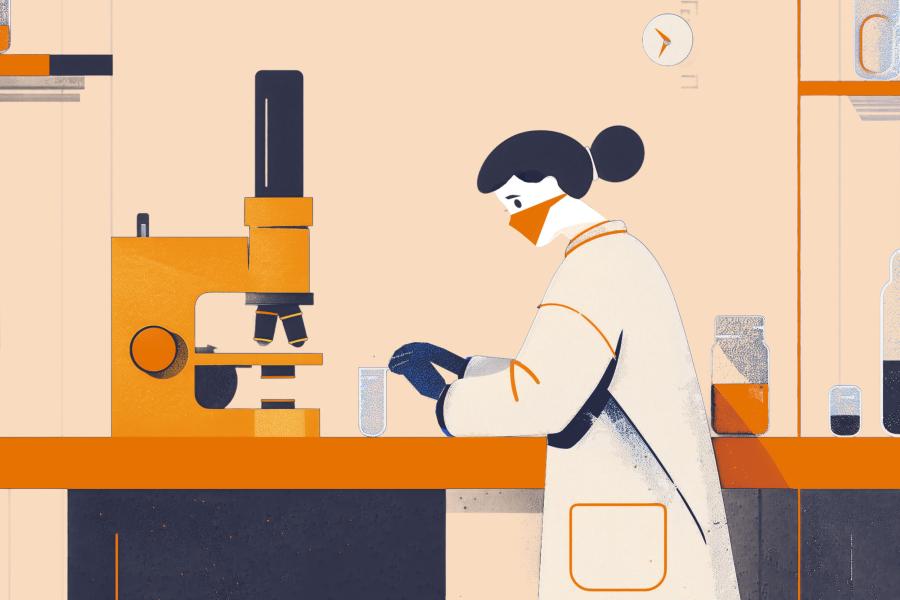University of Virginia School of Medicine researchers and their collaborators have created a powerful new tool they say will benefit essentially every area of biomedical research, from understanding how healthy cells function to the battle against cancer and neurodegenerative diseases such as Alzheimer’s.
UVA’s Gloria M. Sheynkman and her team have developed a new and better way to identify proteins our genes make. These proteins are workhorses inside our cells, playing critical roles in both normal cellular functions and in the development of diseases. Better understanding these proteins will help scientists unlock the mysteries of how our cells work and how diseases take hold. Targeting the proteins could lead to important new treatments for a wide variety of conditions.
Understanding cellular proteins can be tremendously challenging for scientists. Our genes often manufacture proteins that have similar functions, but are ever so slightly different. These variations, known as “isoforms,” add great complexity to the already challenging work of interpreting cellular processes.

UVA’s Gloria M. Sheynkman and her team have released an open-source “pipeline” that will allow other researchers to freely take advantage of the new tool. (UVA Health photo)
You might think of understanding isoforms a bit like choosing a car. Your options may appear to be similar at first, with four wheels and an engine, but they can vary greatly in features and fuel efficiency. It’s important to understand those distinctions.
“Genes don’t drive disease states; protein isoforms, or ‘proteoforms,’ do,” said Sheynkman, of UVA’s Department of Molecular Physiology and Biological Physics.
Sheynkman’s new tool takes a two-pronged approach, combining data from mass spectrometry, which is a chemical analysis used to understand isoforms, with another technology, long-read RNA sequencing, that is used to predict isoforms. To develop this new approach, the researchers had to create an algorithm to integrate the long-read sequencing results with the mass-spectrometry data. The resulting “paired data” allows researchers to identify isoforms that have, until now, defied analysis.
After successfully testing their new tool to identify thousands of unknown isoforms, the scientists have released an open-source “pipeline” that will allow other researchers to take advantage of the tool freely, for the benefit of medical research everywhere. The end result will be a much better understanding of the molecular causes of disease.
“We are very interested in application of this approach to study aberrant protein isoform expression in disease, especially complex diseases and cancer,” Sheynkman said. “Our ultimate goal is to apply proteogenomics, which at its heart is personalized proteomics, to rapidly detect patient-specific proteoforms that are driving disease pathways. We are excited about merging technologies, disciplines and new ideas to make progress in this goal.”
The researchers have published their findings in the scientific journal Genome Biology, which was recently highlighted in Nature Methods.
The team consisted of Rachel M. Miller, Ben T. Jordan, Madison M. Mehlferber, Erin D. Jeffery, Christina Chatzipantsiou, Simi Kaur, Robert J. Millikin, Yunxiang Dai, Simone Tiberi, Peter J. Castaldi, Michael R. Shortreed, Chance John Luckey, Ana Conesa, Lloyd M. Smith, Anne Deslattes Mays and Sheynkman. Sheynkman is part of UVA Cancer Center and UVA’s Center for Public Health Genomics. Mays disclosed owning stock in Pacific Biosciences.
The work was supported by the National Institutes of Health, grants R35GM142647 and R35GM126914, and Jackson Laboratory. A codeathon which kicked off the project was supported by the NIH STRIDES Initiative.
To keep up with the latest medical research news from UVA, subscribe to the Making of Medicine blog.
Media Contact
Article Information
June 30, 2025




